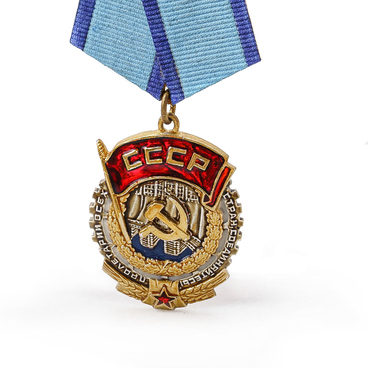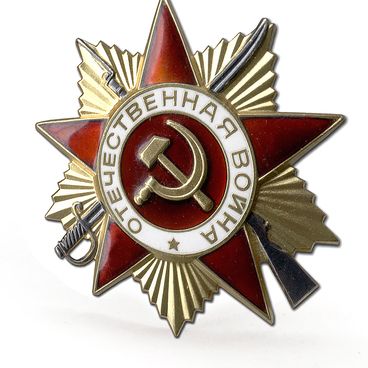The chest badge ‘Soviet Guards’ was established for military men from units awarded the honorary title of ‘Guards’. It was launched from 21 May 1942. In a while, flags and banners of such units began to include this imagery.
The Red Army’s Guards emerged during the fierce defences of 1941 near the town of Smolensk, when several rifle divisions were distinguished for gallantry in action and good organisation by Order No 308 of the General Headquarters, dated 18 September. They were renamed the 1st, 2nd, 3rd and 4th divisions of Guards for heavy losses they inflicted on German troops under very severe conditions.
The forces received flags bearing the image of Vladimir Ilyich Lenin. The Guards were entitled to financial privileges: commanders received a 50% allowance to their basic pay, and the rank and file received a double pay. Some suggested introducing a special military uniform with shoulder straps for the Guards, but it was rather difficult to do when at war.
Joseph Vissarionovich Stalin personally looked at all the designs of the badge. Upon his initiative, Lenin’s embossed image was replaced with the inscription Guards. Produced badges varied from factory to factory. Thus, the Shcherbinsky Stamping Machine Plant initially made the cloth look smooth-faced. Later, they made it ragged by adding cuts to create an illusion of a glimmering flag. Other plants made it glimmer by adding dots, dashes, ripples, etc. The badge’s shape and the shades of the enamel also varied.
During the war, the badge was conferred in a solemn atmosphere, with the troops formed and the combat flag ceremony. Recruits received it after their first battle, whereas navy men and pilots — after a few military actions. This rule applied both to officers and soldiers.
The Navy Guards initially received cap ribands. But those caps were worn only by Red Navy sailors. And it looked as if the distinguishing feature of the Guards — a cap riband − was only for sailors, who accounted for 50% of the crew at the most. The other ones did not receive any decals. Then, there was an idea to rim St. George’s ribbon and wear it on the chest.
For the Navy, the badge was approved on 10 June 1942. It was made as a rectangular plate, covered with orange watered silk with black stripes. The officers’ badges had a golden edging while foremen and sailors had a silvery edging.
In June 1943, the government approved the models of flags for armies and Guards corps, and in February 1944 — for the Navy. The badge for the army was framed by garlands, and the flag of the Guards corps did not bear them. All the models had the slogan “ Death to German Invaders’ on them and the title of the military unit.
After the war, a single model of the guards chest badge was produced. It was awarded to military men as a commendation for half-a-year results. The post-war model had a fringe on the flag and specific stroke marks below it. The Guards badge should be worn on the right side of the chest. If there are any orders and medals, it is fixed thereunder.
After the war, a single model of the guards chest badge was produced. It was awarded to military men as a commendation for half-a-year results. The post-war model had a fringe on the flag and specific stroke marks below it. The Guards badge should be worn on the right side of the chest. If there are any orders and medals, it is fixed thereunder.




